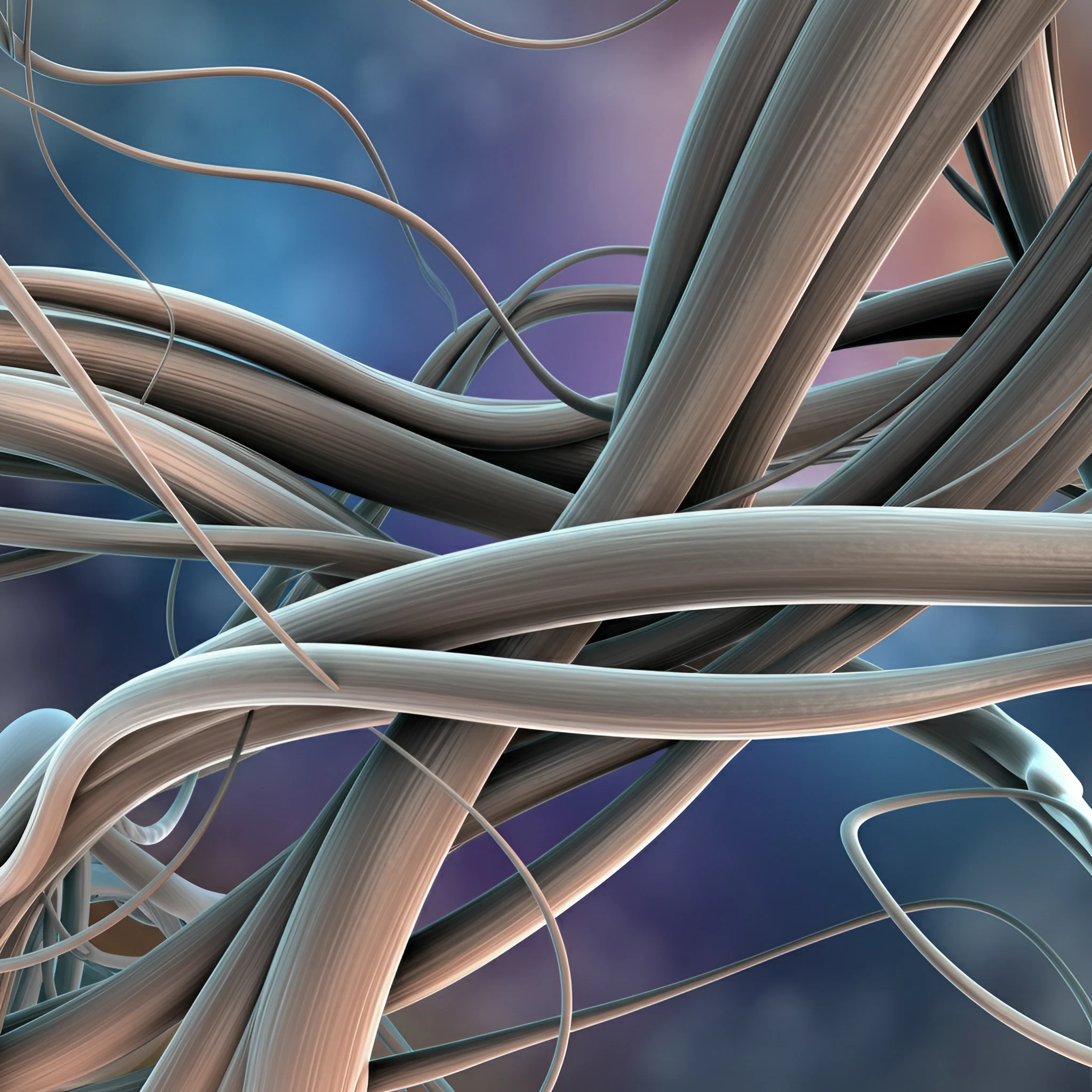Myofibers are vital to the structure and function of muscles in the human body. Whether you’re a fitness enthusiast looking to improve your performance at the gym, a biology student exploring muscle physiology, or a healthcare professional seeking a deeper understanding of muscular health, this article will give you an educational overview of these fascinating structures.
What Are Myofibers?
Myofibers, also known as muscle fibers, are the individual cells that make up skeletal muscles. These long, cylindrical cells are packed with specialized structures called sarcomeres, which are the fundamental units of muscle contraction. Sarcomeres, in turn, are made of myofilaments (actin and myosin). These tiny proteins interact in complex ways to drive the movement and force generation that allow your muscles to work.
Key Structural Features of Myofibers:
- Sarcolemma: The cell membrane of a myofiber.
- Sarcoplasm: The cytoplasm of muscle fibers, containing glycogen and myoglobin for energy storage.
- Myofilaments:
- Actin (thin filament) and myosin (thick filament) are responsible for muscle contraction through their sliding interaction.
- T-Tubules and Sarcoplasmic Reticulum: Provide the electrical signals and calcium ions essential for contraction.
The Role of Myofibers in Muscle Contraction
The sliding filament theory is the scientific explanation of how muscles contract. Here’s how it works:
- Nerve Signal: A signal from the nervous system triggers the release of calcium ions in the sarcoplasmic reticulum.
- Interaction of Filaments: Calcium allows actin and myosin to bind. Myosin heads “walk” along the actin filaments, pulling them closer together.
- Shortened Sarcomere: This movement shortens the sarcomere, and as millions of sarcomeres contract simultaneously across muscle bundles, the muscle generates force.
Think of this process like a zip mechanism, where millions of individual hooks (myosin) latch onto loops (actin) and pull the muscle tighter as you lift a weight or take a step.
Types of Myofibers
Not all myofibers are created equal! There are three primary types, and each serves a different purpose:
- Type I (Slow-Twitch):
-
-
- Use oxygen efficiently, making them ideal for endurance activities.
- Fatigue slowly but generate less force.
- Common in marathon runners and swimmers.
-
- Type IIa (Fast-Twitch, Intermediate):
-
-
- A balance between endurance and power.
- Generate moderate force and have good fatigue resistance.
- Found in athletes like 400-800m sprinters.
-
- Type IIx (Fast-Twitch, Power):
-
-
- Provide short bursts of explosive power.
- Fatigue quickly and rely primarily on anaerobic metabolism.
- Found in weightlifters and sprinters focusing on speed.
-
Understanding these fiber types can help you tailor your fitness routine to achieve your specific goals.
How Exercise Affects Myofibers
One of the most fascinating aspects of myofibers is their ability to adapt. When you engage in regular physical activity:
- Hypertrophy occurs, where the size of each muscle fiber increases, leading to greater overall muscle mass.
- Endurance training can shift your myofiber composition, increasing the number of Type I fibers.
- Strength training promotes the growth of Type II fibers, enhancing power and strength.
Common Myofiber-Related Conditions
Like any part of the body, myofibers are susceptible to injury and strain. Here’s a look at common issues:
- Muscle Strains: Occur when fibers are overstretched, typically in explosive movements.
- Delayed-Onset Muscle Soreness (DOMS): Microtears in the fibers from intensive exercise often cause soreness.
- Muscle Atrophy: A decrease in muscle fiber size from lack of use or aging.
Understanding the nature and care of your myofibers is critical to maintaining muscular health.
Nutrition for Myofiber Health and Recovery
To support healthy myofibers and optimize muscle recovery:
- Protein is essential for repairing and growing muscle fibers. Foods like chicken, tofu, lentils, and eggs are excellent sources.
- Hydration supports the transport of nutrients and electrolytes to active muscles.
- Micronutrients like magnesium, potassium, and calcium play a role in muscle contractions and relaxation.
Consider consulting with a nutritionist to tailor your diet for muscle performance and recovery.
Recent Research in Myofiber Studies
Advancements in myofiber research have opened up exciting possibilities. For instance:
- Clone Robotics has developed synthetic muscle fibers (myofibers) that mimic human muscle performance, as demonstrated in their “Protoclone” robot, which features over 1,000 artificial myofibers.
- Cutting-edge studies are exploring how stem cells and genetic engineering might enhance muscle repair or combat diseases like muscular dystrophy.
These innovations hint at a future where we can augment or repair damaged muscle fibers with remarkable precision.
Final Thoughts on Myofibers
Myofibers are foundational to our ability to move, lift, and live a healthy life. By understanding their structure, function, and care, whether through exercise, nutrition, or recovery methods, you’re one step closer to optimal muscular health and performance.
Want to learn more about how to optimize your fitness and improve your muscle strength using the latest science? Explore more educational articles on all things fitness, biology, and health.
Image Suggestions (for Visual Appeal):
- Illustration of the myofiber structure, highlighting the sarcomere and myofilaments.
- A diagram comparing Type I, Type IIa, and Type IIx fibers and their specific attributes.
- A fitness enthusiast lifting weights, showing muscle engagement.
- A conceptual visualization of artificial myofibers in robotics, showcasing the Clone Robotics Protoclone example.
- Nutrition layout including protein-rich foods, hydration, and essential micronutrients for muscle health.
Unfortunately, I cannot directly generate images, but using graphic design platforms like Canva or collaborating with medical illustrators can bring these visuals to life!








